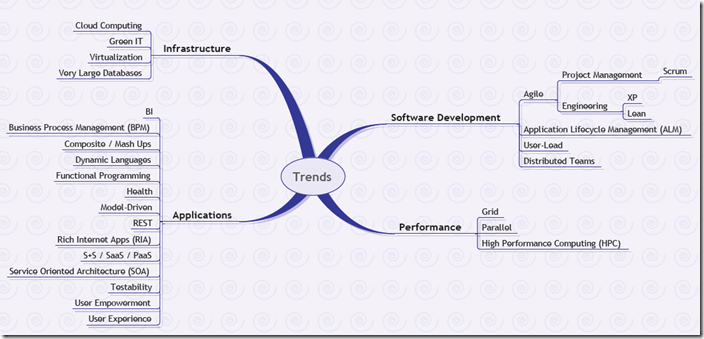Now Available: Trends Page at Sources of Insight
One of the most important things I learned long ago is the power of trends, and how they can help you anticipate.
Now, each year, as a habit, I put together a serious and significant roundup of trends.
Here are my trends collections at your fingertips:
(If you read nothing else, read the Trends for 2013 post. It’s hard-core.)
If you can see things coming, you can prepare for them. Sometimes you can really embrace them and ride a wave. I use them to help me play out possibilities and to inspire new ideas and create new value. I also use them to avoid being surprised, or at least surprised less. In the arena that I’m in, it’s easy to be left behind if you don’t skate to where the puck will be.
That’s true for many businesses, and it’s true for many careers.
While I had always paid attention to trends, in 2009 was really a turning point for me. I was working on the Microsoft Application Architecture Guide (you can think of it as playbook for building applications on the Microsoft platform.) As part of the effort, I needed to know where the IT industry was going. I also needed to know how the Enterprise landscape would change.
I remember the exercise of mapping out the trends. What’s obvious now was not as obvious then, since some things were just starting to take off in the Enterprise, or early in the market. One of the big shifts was to REST. Another big shift was to more virtualization. In fact, a few big Enterprise shops that I know, were using virtualization and calling it their private “Cloud.”
Here is the Mind Map of trends I created back in 2009:
Behind the scenes, what I was doing was effectively polling many development shops around the world to see what was hot and what was emerging. Meanwhile, I was cross-checking on where CIOs were putting their money. I was cross-checking that with analysts and trend spotters. I paid a lot of attention to where big companies were placing their bets. I expected rippled effects in the industry.
I needed to have a good handle on the trends and emerging patterns because I needed the book to be ahead of it’s time, or at least not dated out of the gate. (A key pattern I learned here is to create “evergreen” and durable frames so that as technologies churn, the main frames stay the same.)
The big things that popped for me on the map, at the time, were: Agile, Business Intelligence, Big Data, Cloud, Rich-Internet Apps, and User Experience. And, the shift to REST was disruptive. I was starting to notice how some customers that were embracing the Cloud were leap frogging ahead. I also noticed how customers who invested in user experience as a first-class citizen were building higher-quality applications that people wanted to use. With too many choices, user experience wins. The apps that make you feel good, make you personally effective and connect with others win.
I learned a few valuable lessons from the exercise:
- The future doesn’t need to surprise you. The future isn’t as mysterious when you know how to map out the system.
- Consumer patterns really shape Enterprise patterns. After all, people are people, and the lines blur between work and life.
- You can use the future to shape your path. If you connect trends to the pains, needs, and desired outcomes of your customers, you can very much anticipate where likely sources of value will be.
On a personal level, you can also use trends to help you decide your bigger decisions in life, including your career path. For example, I know some colleagues that saw Big Data as the place to be, and they started working on their data scientist skills, and are now seeing it pay off.
I’m starting my trends research a little earlier this year. I’m paying attention to examples of things like m2m (machine to machine) scenarios and possibilities in the real world. I’m especially interested in Television 2.0 — The $2.2 Trillion War for your Living Room. I’m also paying attention to more wearable computing scenarios, as well as innovations in education, health, and manufacturing. I’ve heard some amazing stories of 3-D printing as a disruptor. And, I’m hoping for some really surprising possibilities with phones.
As Peter Drucker said, “The best way to predict the future is to create it”, and Alan Kay said, “The best way to predict the future is to invent it!”
If you’re not shaping your future, someone else is.
